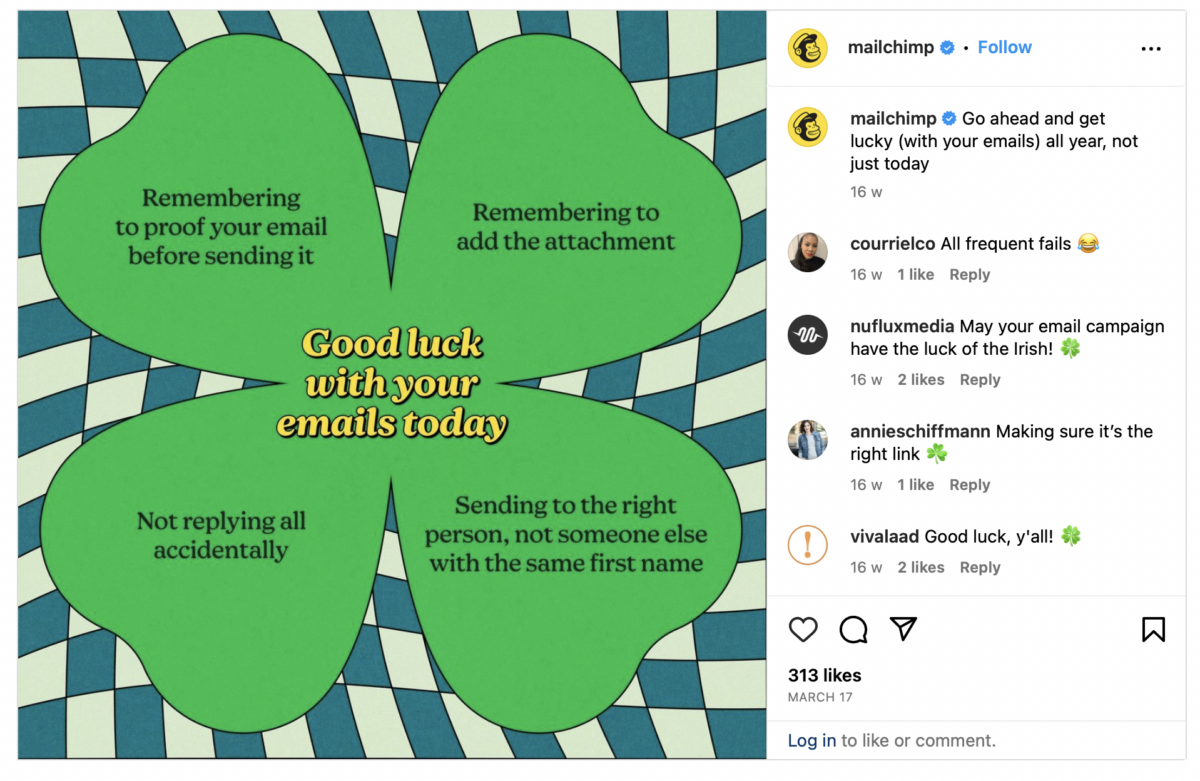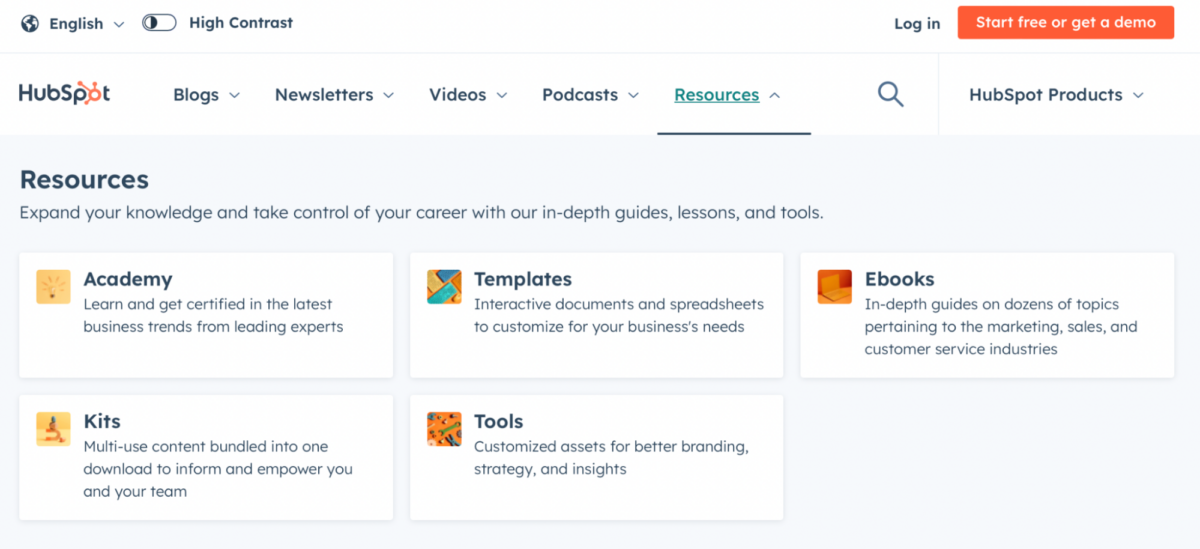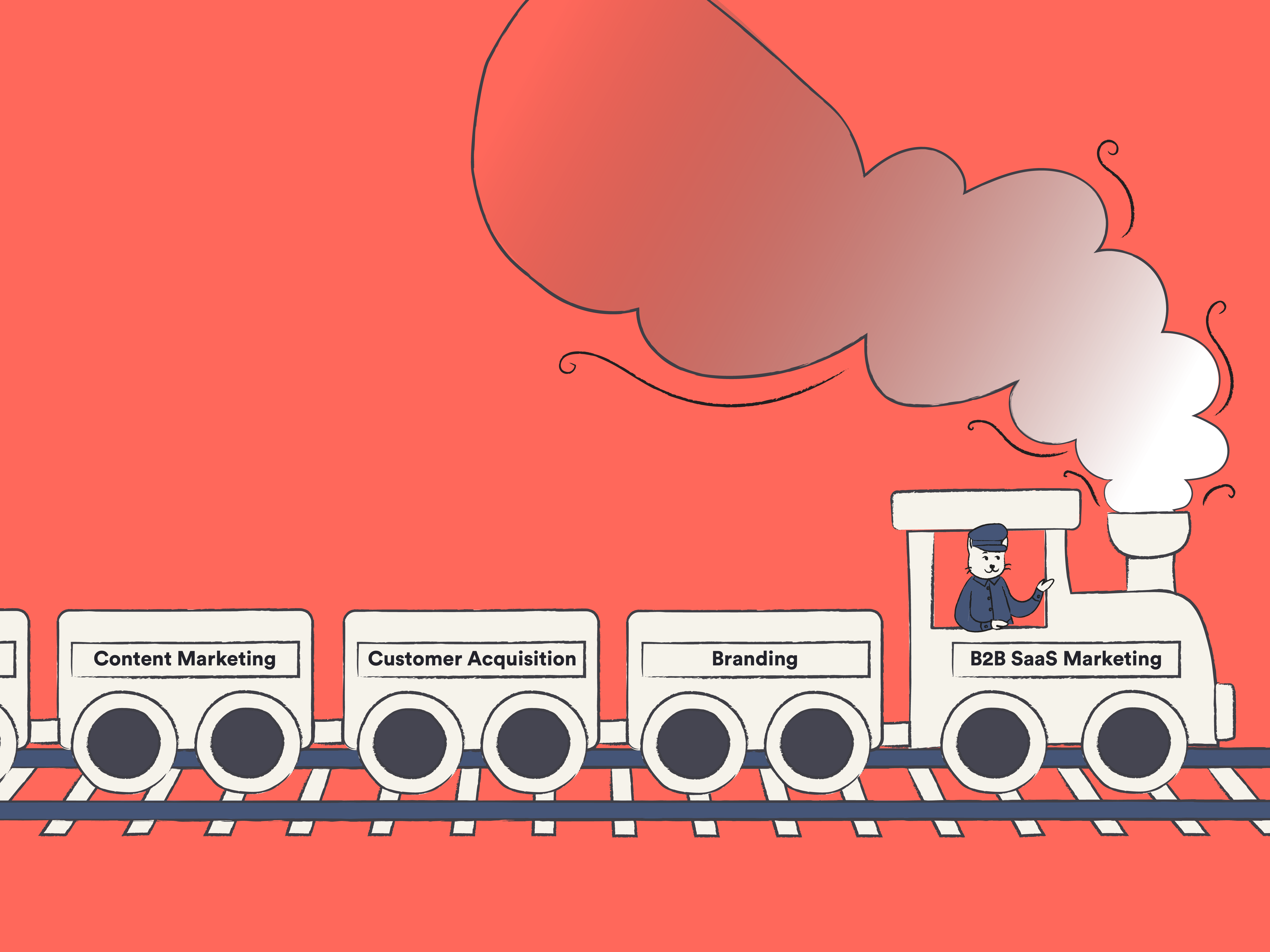How many times have you ignored an unknown phone call just in case it happened to be a cold caller? They always pick the worst times, like when trying to squeeze in a nap after a busy day, or when you finally get that moment of blissful quiet. If you’ve experienced this frustrating scenario, then you know this is not how to build up your customer fanbase.
Instead, you want to gently coax your target audience towards you by demonstrating your value. This is even more important for B2B SaaS companies who have to build personal relationships with customers and often encourage them onto long-term subscription plans. With lead generation, you capture and keep the interest of your potential customers.
But it’s not without its challenges. 63% of companies claim this task to be the biggest obstacle in their marketing efforts. Not only this, but the SaaS marketplace is becoming increasingly saturated, as it grows at an annual rate of approximately 18%. You really need to know what you’re doing if you want to spark intrigue.

Maybe you’re wondering where to begin. Or perhaps your current strategy isn’t cutting it anymore. Whatever the case may be, we’re here to help. But before we launch into your soon-to-be winning strategy, let’s get a closer look at what lead generation is.
What is lead generation?
In short, lead generation is the action of cultivating an interest in your company and turning that into revenue. Many companies consider it to be an unmissable part of their marketing operations. When it isn’t utilized, you risk losing out on crucial benefits such as visibility, brand awareness, and credibility, which play a huge role in your overall business growth.
Understanding what generating leads means is the first step in learning how to optimize it. Here is a simplified breakdown of the process so you can do just that.
- Identifying people who are the most likely to be interested in your products/services
- Collecting their contact information to begin furthering their interest in your brand
- Targeting them before they become a new customer with nurturing techniques
- Building a deeper and more meaningful connection
- Increasing chances of a future sale because they have the motivation to purchase
- Turning a buyer into a loyal advocate who will organically promote your business

Unfortunately, it’s easier said than done. A successful marketing strategy is rarely that straightforward. But you can do yourself a favor by exploring some of the most effective tactics out there. To put you even more ahead of the game, here’s a list of them below.
Top B2B SaaS lead generation strategies
Now you know what you’re up against. It’s time to put what you’ve learned into practice. It’s worth noting that each lead generation tactic will target the sales funnel and buyer journey at different places. Consider where you need help before you start implementing.
Create detailed and data-driven buyer personas
Customers are complicated. Especially when you’re a B2B SaaS company. The sales process is generally longer and involves more people. They’ll also typically have more technical and demanding requirements than other consumers. To avoid having a vague and unhelpful image of your target audience, try creating a detailed buyer persona.
A buyer persona will tell you who is the most likely to buy your product, as well as other key information e you’ll need to know about them so you can hit the nail on the head with your marketing. Let’s look at an example specifically designed for a brand like your own to see what works.

You learn a lot about HR Holly from one short document. For example, by researching both her professional and personal habits, your messaging will have the potential to affect her emotionally. What she wants to achieve with her search for SaaS products also becomes clear, so you can present your solution to her instantly without wasting her time.
Here are questions you could ask to craft a document as detailed as the one above. Doing so allows you to personalize everything from recommendations, messaging, and content.
- What is their current role?
- Are they the decision-maker of the business?
- What do they contribute to the company?
- What are their challenges and pain points?
- What SaaS product, if any, do you think they already use?
- What are their purchase barriers (tight budget, unstable revenue, stakeholder influence)?
If this information is based on a semi-fictional character, then where are you supposed to gather it from? Don’t let it come from your imagination, assumptions, or biases. What you need is a powerful combination of data insights, market research, and in-depth analytics. Here are a few sources of knowledge for you to dive into.
- Talk to your sales team. These amazing individuals are close with your customers. They’ll be able to tell you more about their behavior, buying patterns, and overall attitude towards your SaaS products.
- Customer interviews. The people who currently use your software will be more than happy to share some information with you. Maybe offer them a discount on their subscription or a gift card for taking the time to help you.
- Look at the numbers. Your website traffic, social media analytics, and customer database might give you a better idea of when engagement happens, where it comes from, and which channels are used the most.
- Make your email marketing more detailed. When someone subscribes or purchases, maybe ask them for a few details about themselves and why they signed up. Likewise, if you lose their subscription or sale, you could do the same again, similar to an exit interview in a job.
Spend time crafting quality content marketing
The content you create is the fuel of your business’s engine. Without it, it’s likely that your lead generation will fall short of its goals. This method can be a game changer, but only if you know how to maximize its potential. You can’t throw something together and hope it sticks. Remember how much information you’re confronted with every time you open Google.
Instead, you need to publish the right thing. The type of content will be up to you, and we’ll explore your options shortly. Before then, you need to make sure everything you create is high-quality, attention-grabbing, and relevant. Doing this has so many benefits. You’ll be able to filter in the most qualified leads, make them ready to buy quicker, and drive action.
This is even more important for a B2B business. Content can help you inject personality into your professional and authoritative presence. This provides proof to others that investing in your services and collaborating with you is a smart business decision.
So, it’s time to put the work in in order to boost your lead generation efforts. But how? Some businesses will choose to create content themselves. Others will outsource and hire a freelancer or agency. It doesn’t matter which method you choose, because either way you’ll be another step closer to fostering an engaged and passionate audience.
Below are some examples of what you could publish.
- Blog content such as how-to guides, feature spotlights, and answering frequently asked questions (FAQs).
- Videos of your team at work or general behind-the-scenes content.
- Industry-related memes or humorous posts about common industry problems.
- Podcasts about relevant topics or trends.
- Invite engaging individuals to your page to do guest posts.
- Customer showcases where you highlight the successes they’ve had with you.
- An infographic about some interesting surveys you conducted or found.
- White papers and research that addresses your potential customer’s fears and problems, showing directly how your SaaS business can solve these for them.
- Social media posts to meet your audience where they want and be convenient.
- Email campaigns with tailored messaging, discounts, or deals to subscribers. Or you could send out cold-emails to attract new customers.
Let’s look at B2B SaaS business Mailchimp for some wisdom. Firstly, their Instagram post contains an eye-catching design that draws people’s attention. Secondly, it addresses common and humorous problems we’ve all faced when emailing. Once you click on the account for more, you realize that accident-proof automated email marketing just so happens to be their forte.

Consider taking a human-to-human approach to your content. Here you’ll aim to speak to your audience on a personal level to foster an environment of empathy and authenticity. You can learn more about this with our beginner’s guide to H2H, which you can find here.
Use lead magnets
We all like a bargain. It’s probably part of being human. Why not take advantage of this fact and draw customers towards you with a free asset? This method is known as using a lead magnet. You generate leads by offering a long-form resource with educational value.
The main purpose of this tactic is to bridge the gap between one-time visitors and loyal customers. When you follow up with the viewer and give them something useful, you convince them to stick around for longer. If you’re successful and they sign up to what you’re offering, you’ll gain their much-needed contact details and be presented with the ability to develop their interest.
There are a variety of resources to consider creating, depending on your budget, time to spare, and whether you have a content team. Below are some examples to begin with.
- Templates
- Case studies
- White papers
- Free trials
- eBooks
- Webinars
- Gated content (information that needs permission/a form to be accessed)
Target your resources towards your ideal customer. Do you want to attract low-budget small businesses and startups? Free trials might be the best move. Or if it’s a manager you want to capture, discuss the features that contribute to productivity and teamwork.
Let’s look at the marketing champion HubSpot for a good example. Their library of content is inspiring. Each folder is targeted towards segments of their target audience (sales, marketing, customer service) so everyone feels addressed from the first point of contact.

Make the most of quality leads on LinkedIn
Some of us will watch some TikTok videos in the morning before our eyes are properly opened. Others prefer to scroll through Twitter feeds like it’s a newspaper. It should come as no surprise that social media has become an essential part of marketing campaigns.
Businesses will often stretch themselves thin trying to appeal to everyone’s favorite channel. But now you’ve got your buyer personas, you know exactly who to appeal to. As a B2B marketer, there’s a standout platform to give your attention to, and that’s LinkedIn.
Why is this the case?
- Over 58 million companies have LinkedIn profiles as of 2023.
- LinkedIn has features such as Sponsored Messaging Ads to help you target your ideal customer. This may be through job title, industry, or interests outside of work.
- The platform’s mission statement is to “connect the world’s professionals”.
- LinkedIn itself claims that 80% of B2B leads are generated with them.

But you can’t tap into this without putting the work in. In a sea of business owners, employees, and entrepreneurs, you have to make yourself worth interacting with. This can be a challenge if you’re not familiar with LinkedIn, so here are tried-and-tested methods.
- Join groups. One way to get your name out there is to present yourself as an active member of your community and industry.
- Be authoritative. Share resources like statistics and infographics to your feed and give your thoughts on the latest trends. This helps you to become a thought leader.
- Have a strong presence. Make sure your values, brand purpose, and messaging all align and are present on your page. People love consistency and are drawn to it.
- Build up social proof. Build up trust and reputation with LinkedIn’s testimonials and endorsements by asking partnerships and customers to leave you some.
Make the most of calls-to-action (CTAs)
A unique and clear call-to-action (CTA) can lend a helping hand in your lead generation journey. When done well, you can encourage a sale or prompt an engaged response from a visitor from your blog post, email, or website. All you need is a few magical words.
The action-driven text acts as an instruction for the reader, telling them what they should do or where they should go next and why. This brings value to them, instead of making them look for it, eliminates the need for decision-making, and shows that you want to help.
You’ve probably seen plenty of your own, including “Sign Up Here”, “Click to Buy”, and “Subscribe to Our Newsletter” in flashy buttons or brightly-colored banners. But not all of them convince a consumer to click. That would be too easy. You have to make it yours.
Let’s look at our top tips for compelling your audience to click where it matters.
- Create an enthusiastic tone instead of a pushy one.
- Use simple language and keep the phrase as short as possible.
- Utilize chatbot technology if you have the resources to.
- Always include a direct, urgent, and clear action like “Download Here”.
- Personalized CTAs perform over 200% better than generic ones.
- Clearly express the positive outcome that comes from clicking the CTA.
Here’s an example from the accounting software Xero. Their CTA stands out against the other text, along with the incentive. It’s also at the top of the page and is the first thing that catches the reader’s eye. Users can then read more about the product quickly, without having to search for it. For good measure, a second CTA offers free services.

There’s no right or wrong answer when it comes to where you put your CTA. That’s completely up to you. Some say it’s best to include one “above the fold” to ensure it’s seen without needing to scroll. Others think having one halfway down perks the visitor back up. But you’ll find people who think placing one at the end is best because that’s when users are most likely to become lost.
Trial them all out for yourself. It’s unlikely you’ll get it right the first time. If you’re still not sure, conduct some A/B testing to find out which position performs the best.
Don’t forget the importance of networking
Sometimes, we rely too much on social media messaging and online meetings. We’re all guilty of it. These methods are convenient, reduce travel costs, and can make the more introverted of us feel at ease. However, B2B SaaS customers will often prefer to see you face-to-face in meetings or, sometimes, fancy dinners. They want to see you in action.
There are many reasons for this. They get to read your facial expressions, find out how confident you are in your abilities and product, and see if you would gel well together in a partnership. As daunting as this sounds, it’s a great way to get meaningful leads. You’ll also become a stand-out considering many of your competitors probably don’t network.

So, get your business cards out and practice that eye contact. Not knowing where to go isn’t an excuse anymore. Even though the pandemic sent us online and accelerated the use of virtual spaces, there are plenty of ways you can link up in the physical world.
Below are some opportunities to consider specific to your audience and business type that allows you to connect physically and personally.
- Trade shows for SaaS providers
- Events organized on LinkedIn
- Seminars specific to your industry
- Professional associations
- Getting involved in a relevant charity
- Roundtable discussions for a more intimate event
Focus on listening. Whoever you’re talking to might present an opportunity for you to solve their problem. If this does happen, explain how your product could be what they’re looking for. You may not close a sale then and there, but stronger prospects, a better reputation, more awareness, and a solid supportive network are just as valuable in the long run.
Boost your efforts with SEO
If we want something or need to know something, we’ll almost always take to the internet. And why wouldn’t we? It has information on more topics than we can even begin to comprehend. For a consumer, this is great. It means all they have to do is type in words and they’ll begin their search for the perfect solution.
But for a B2B business owner, it’s not good news if you aren’t one of the top results on Google’s search engine. Your customers want the best because your performance directly affects whether they succeed or fail. They aren’t going to look at the second column of the search engine results page (SERP), that’s for sure. So, how can you get yourself to the top of the list?
Search engine optimization, better known by many as SEO, is a technique many marketers couldn’t live without. 60% of them report inbound tactics like this one to be their highest quality source of leads. Why not try it out and see the results for yourself?
This method is a goldmine of organic traffic that has the potential to impact your lead generation campaigns massively. But how?
The process involves attempting to make your website and content rank higher on Google’s SERPs. You’ll pull your piece of content towards your target market and increase purposeful visibility.
But to climb your way up the ladder, you need to conduct SEO better than your direct competitors. Here are some of the things you can do to surpass the opposition.
- Build a blog specifically with SEO content in mind
- Dedicate time to conducting keyword research
- Keep up a regular social media presence
- Establish a backlink strategy
- Find out which keywords your competition uses
- Avoid using advertisements that could be seen as spam
- Focus on value over content length or quantity
Bear in mind that, despite this strategy being one of the most important, it requires a lot of time and energy before you see any results. Also, if you don’t have the skills or training, it can be even harder to get right. We recommend trying a free online course like HubSpot’s.

Learn about the lead generation tools available
Don’t get frustrated if you aren’t generating the leads you were hoping for. Chances are you just need a bit of extra help. While most lead generation tools can push you towards your target, we’re going to introduce you to the ones with even more amazing capabilities.
Investing in the right platform is crucial. Do you want to focus on inbound marketing or outbound? Are you looking for something free, or are you not phased by steep pricing points? Is marketing automation a must, or do you prefer to do it the old-school way?
Once you identify what it is you’re looking for, you can start to look at the tools that meet your needs. Consume all the free trials, demos, and tutorials you can, and before long, you’ll find a perfect match that blends seamlessly with your existing operations.

Let’s speed up that process with some of our favorite platforms worth trying.
- HubSpot Marketing: a free CRM hosts a range of marketing tools such as ads, pop-ups, and reports so you can gain more leads with minimal effort required.
- Unbounce: an AI-powered landing page builder that reroutes visitors to the best customized page for them so you can increase your conversion rate.
- Keap: an automation platform where you can organize customer information and conversions, optimize your leads with segmenting, and gain in-depth analytics.
- Leadfeeder: B2B lead generation software that shows you which companies are already viewing your website so you can learn from previously anonymous traffic.
- Overloop: a sales engagement platform where you can monitor and manage your entire sales pipeline from one app and send prospective campaigns out at scale.
- Hunter.io: an email outreach tool that uses proprietary technology and AI to find, verify, and enrich contact details so you can find whoever matters most to you.
There are plenty more out there to choose from. And you’re not limited to one, either, if multiple catch your eye. Just remember that, while automated workflow does reduce the burden on your team, it’s important to let your brand’s personality shine through as well.
Always measure your efforts
Lead generation metrics and KPIs are a crucial part of the process. They’ll tell you if the strategies you’re working on are missing the mark. They’ll also show you which specific area of operations needs to be improved so you can progress onwards more effectively.
But they do a lot more than this. Your marketing team can see what’s doing well, which will boost satisfaction and retention. Also, you’ll have a timeline of results to show customers that you’re a growing company and to convince stakeholders that you’re worth investing in.
But first, before you start reaping these rewards, you have to identify the right ones to measure. It may take some thinking, but just make sure they’re closely connected to your objectives, can be easily understood by everyone, and link back to your target audience.
In the meantime, here are some examples to start looking into.
- Social media engagement
- Time to conversion
- Average revenue per customer
- Website traffic
- Total number of leads generated
- Referral traffic
- Conversion rate
- Customer lifetime value

When you’re introducing new strategies like the ones we mentioned above, they can be time-consuming, expensive, and a drain on resources. We suggest focusing your metrics and KPIs on the ones you’ve chosen to implement. From this you can determine how useful they’ve been, if they’ve contributed to the success, and if they’re worth continuing.
One step closer to high-quality leads
The future of B2B SaaS looks incredibly bright. The industry shows no sign of wavering, even with the challenges business owners might face. Now is the best possible time to perfect your strategies and present yourself as a company that can stay the distance.
As a business owner, manager, or creator, you have to juggle lots at once. It’s part of the job description, really. We know you’re running on a tight schedule, but if you want to grow fast and effectively, you’ll need to give your lead generation strategies extra attention. Take the time to research new leads, continuously improve your process, and learn every day.










